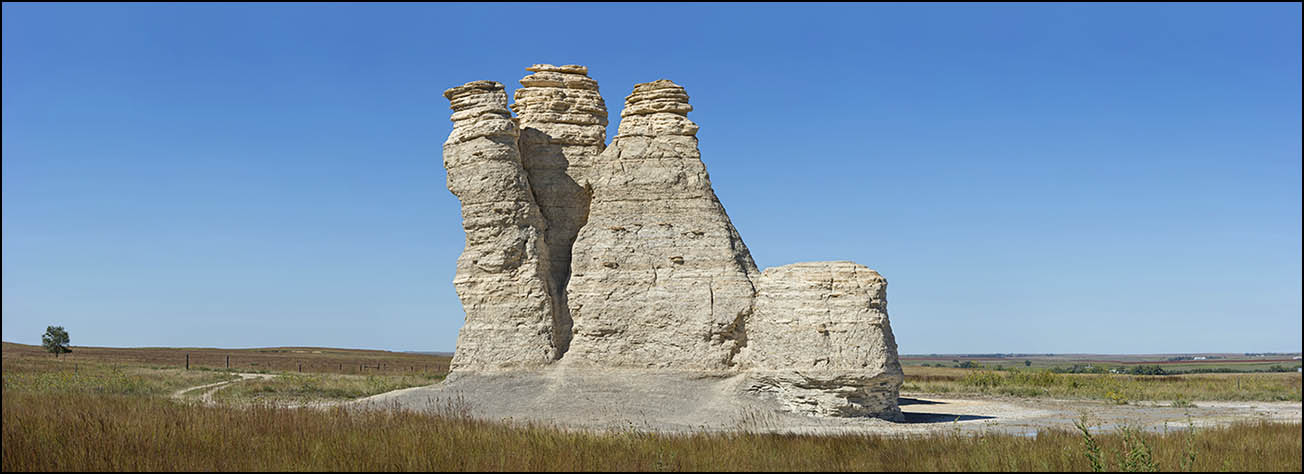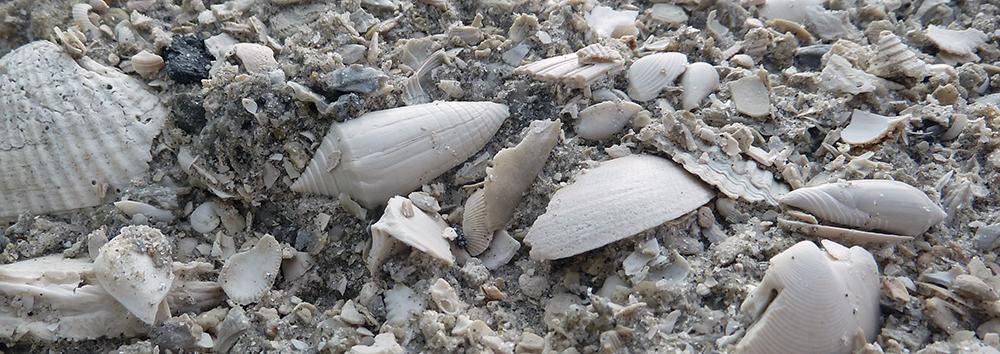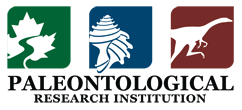Introduction
The Digital Atlas of Ancient Life began as a digitization project funded by the PaleoNiches Thematic Collection Network (TCN), a series of interconnected National Science Foundation grants to multiple principle investigators. It was later funded by the Cretaceous World TCN. In the beginning, the project was envisioned as a series of Digital Atlases (field guides) covering different regions of the United States during specific time periods. The Ordovician, Pennsylvanian, Cretaceous, and Neogene Atlases are some of the outcomes of this funding. A series of teaching resources (exercises) related to the four Digital Atlases were also developed for different grade levels.
Beginning in 2017, new pieces began to be added to the umbrella Digital Atlas of Ancient Life homepage, including the Digital Encyclopedia of Ancient Life (DEAL) and the Virtual Collection. Additionally, a Digital Atlas of Ancient Life App and Digital Atlas Identify App were developed.
The page below provides some information for each component of the expanded Digital Atlas of Ancient Life project, except for the apps (for information on the apps, see the Apps page). This includes the goals, licensing information, suggestions for citation, and publications, presentations, and other media about the projects. Background is also provided on the TCNs that initially funded for the Digital Atlas project. Finally, some of the citations and uses of Digital Atlas resources are listed.
Video introductions to the Digital Atlas of Ancient Life project
- YouTube video of Jonathan Hendricks's presentation "Free Resources for Teaching Paleontology Online," given during Session 1 of the 14th Paleontological Research Institution Summer Symposium in August 2020 (starts around 57:30): https://youtu.be/JMA0nQ086kg
- YouTube video introduction to the Digital Atlas of Ancient Life project: https://youtu.be/CIZUBOkuKe4
Digital Atlas of Ancient Life. Video introducing the various components of the Digital Atlas of Ancient Life project. Note: This video has music but no narration. (Credit: Jon Hendricks/Paleontological Research Institution, via YouTube).
Digital Atlases (field guides)
The original goal of the Digital Atlas of Ancient Life (DAoAL) project was to provide free resources to help individuals identify and better understand fossil species from particular regions and time intervals. Four Digital Atlases have been developed covering different time periods and regions of the United States:
- Cretaceous Atlas of Ancient Life: Western Interior Seaway
- Digital Atlas of Ordovician Life: Exploring the Fauna of the Cincinnati Region
- Neogene Atlas of Ancient Life: Southeastern United States
- Pennsylvanian Atlas of Ancient Life: Midcontinental United States
Each Digital Atlas is akin to the types of field guides that naturalists might use to identify bird or plant species. The data underlying each Digital Atlas are derived from specimens in museum collections that have been "digitized."
One aspect of digitization involves converting written descriptions of fossil localities associated with specimens (e.g., "found 4 miles north of Miller’s Crossing") into precise latitude-longitude values that can be "pin-pointed" on maps using geographic information systems (GIS). This process is called georeferencing. Another aspect of digitization is to capture digital images of fossil specimens and share these with the public. This digitization effort will allow researchers to ask new questions of old data. For example, it will now become possible to track how species geographic ranges changed over time in response to environmental changes.
Use of materials in Digital Atlases (field guides)
The Pennsylvanian, Cretaceous, and Neogene Digital Atlases are licensed under a Creative Commons Attribution-NonCommercial-ShareAlike 4.0 International License, as indicated at the bottom of each webpage in these atlases. The Ordovician atlas is licensed under a Creative Commons-NonCommericial-ShareAlike 3.0 license, as indicated on its Project Overview page.
Citing the Digital Atlases
Citing the overall project:
If you use content from the Digital Atlases listed above in a publication, please cite the overview paper for the DAoAL in Palaeontologia Electronica:
- Hendricks, J.R., Stigall, A.L., and Lieberman, B.S. 2015. The Digital Atlas of Ancient Life: delivering information on paleontology and biogeography via the web. Palaeontologia Electronica 18.2.3E: 1–9. https://doi.org/10.26879/153E
Citing the Ordovician Atlas:
Instructions for citing the Ordovician Atlas are given on its Project Overview page. In addition to citing the main Digital Atlas paper (Hendricks et al. 2015, listed above), you should cite the paper introducing the Ordovician Atlas, as well as the Ordovician Atlas website:
- Stigall, A.L. 2013–2015. Atlas of Ordovician Life. www.ordovicianatlas.org
- Stigall, A.L., J.E. Bauer, and H.-M. R. Brame. 2014. The Digital Atlas of Ordovician Life: digitizing and mobilizing data for paleontologists and the public. Estonian Journal of Earth Sciences 63: 312–316. https://doi.org/10.3176/earth.2014.36
Citing the Pennsylvanian, Cretaceous, and Neogene Atlases:
No additional publications specifically introduce the other Digital Atlases. For these atlases, please cite the main Digital Atlas paper by Hendricks et al. (2015, citation listed above), as well as the website URL for the atlas. Presentations have been given about the Cretaceous and Neogene Atlases, and their abstracts may also be cited.
Abstracts of presentations about the Digital Atlases
- Hendricks, J.R. 2017. The Cretaceous Atlas of Ancient Life: A new online resource for identifying ammonoids and other animals from the Western Interior Seaway. Geological Society of America Abstracts with Programs 49(6). https://doi.org/10.1130/abs/2017AM-300743
- Hendricks, J.R., R.W. Portell, E.M. Lenci, N. Abdollahian, A.M. Lenci, B.A. Kittle, and S.W. Roberts. 2013. The Digital Atlas of Neogene Life. Geological Society of America Abstracts with Programs 45(7): 324. https://gsa.confex.com/gsa/2013AM/webprogram/Paper229662.html
- Hendricks, J.R., R.W. Portell, N.L. Sylva, A.B. Kittle, S.W. Roberts, N. Abdollahian, and A.M. Lenci. 2014. The Neogene Atlas of Ancient Life: A new digital resource for paleontology. Geological Society of America Abstracts with Programs 46(6): 701. https://gsa.confex.com/gsa/2014AM/webprogram/Paper243579.html
Digital Encyclopedia of Ancient Life
The Digital Encyclopedia of Ancient Life (DEAL) is an open access "textbook" about fossils and the history of life on Earth. This first chapters were released in 2017, and the project is ongoing. Chapters are added as they are written, and authors differ from chapter to chapter. The eventual goal of the project is to produce a comprehensive textbook of paleontology that provides at least a basic introduction to all major groups of organisms.
Use of Digital Encyclopedia materials
Materials (text, images, and video) created for DEAL are licensed under a Creative Commons licensing scheme. Most materials are licensed under a Creative Commons Attribution-NonCommercial-ShareAlike 4.0 International License (CC-BY-NC-SA 4.0). The licensing information is provided at the bottom of each page. Materials included in DEAL that were reproduced from other sources may have different licensing, so the original source should be consulted for terms of use.
Citing the Digital Encyclopedia
If you are using an information from an individual chapter of DEAL, you should cite the chapter using the suggested citation on the first page of the chapter. For example, the suggested citation for the Geological Time chapter is as follows:
- Hendricks, J. R. 2018. Geological time. In: the Digital Encyclopedia of Ancient Life. http://www.digitalatlasofancientlife.org/learn/geological-time/
If you would like to cite the entire Digital Encyclopedia, you should cite the URL (https://www.digitalatlasofancientlife.org/learn/). Currently, there are no publications that describe DEAL; however, several presentations have been given on the project.
Abstracts of presentations about the Digital Encyclopedia
- Hendricks, J.R., E.J. Hermsen, and E. Hauf. 2018. The Digital Encyclopedia of Ancient Life (DEAL): An open access paleontology textbook. Geological Society of America Abstracts with Programs 50(6). https://doi.org/10.1130/abs/2018AM-318607
Other presentations about the Digital Encyclopedia
- Hermsen, E.J., and J.R. Hendricks. 2018. The Digital Encyclopedia of Ancient Life (DEAL): An open access, online paleontology textbook. 35th Midcontinent Paleobotanical Colloquium (Athens, Ohio). [Abstract not available online/unpublished]
Virtual Collection
The Digital Atlas Virtual Collection is a teaching collection of 3D models of fossil specimens that were made using photogrammetry. Most of the models posted so far were produced by Emily Hauf and Jaleigh Pier, and collections were curated (organized, labels applied to specimens) primarily by Jonathan Hendricks, with Elizabeth Hermsen co-curating the land plant collections. The models are organized into virtual drawers—mostly by organism—on the Digital Atlas website. They are also organized into themed collections on Sketchfab. The Virtual Collection was first posted in 2019, and updates will be made periodically.
Use of Virtual Collection models
The models produced for the Virtual Collection are licensed using a Creative Commons 0 1.0/Public Domain Dedication, meaning that they are free to use without restriction. Sketchfab provides code so that models can be embedded in external websites. Please credit the models to Digital Atlas of Ancient Life.
Citing the Virtual Collection
If you would like to cite the entire Virtual Collection, you should cite the URL (https://www.digitalatlasofancientlife.org/vc/). Currently, there are no publications that describe the Virtual Collection; however, several presentations have been given on the project that may be cited. There are also several blog posts written by contributors to the project, which may be adequate citations in some contexts.
Abstracts of presentations about the Virtual Collection
- Hendricks, J. 2019. Virtual teaching collections in paleontology. Paleobios 36 (suppl. 1): 167–168. [Abstract for the 11th North American Paleontological Convention, Riverside, California, June 23–27, 2019.] Link to full abstract volume: https://escholarship.org/uc/item/6r18f8wn
- Hendricks, J.R., E.J. Hermsen, and E. Hauf. 2018. The Digital Encyclopedia of Ancient Life (DEAL): An open access paleontology textbook. Geological Society of America Abstracts with Programs 50(6). https://doi.org/10.1130/abs/2018AM-318607
- Pier, J.Q., E. Hauf, E.J. Hermsen, J.A. Smith, and J.R. Hendricks. 2020. Pandemic paleontology: Teaching online using the Digital Atlas of Ancient Life Virtual Collection. Geological Society of America Annual Abstracts with Programs 52(6). https://doi.org/10.1130/abs/2020AM-357601
Blog posts about the Virtual Collection
- Hendricks, J.R., and E. Hauf. 2018. Science spotlight: Digital Atlas of Ancient Life. Sketchfab Community Blog. https://sketchfab.com/blogs/community/science-spotlight-digital-atlas-of-ancient-life/
- Hendricks, J.R., J.Q. Pier, and E.J. Hermsen. 2019. Virtual collections on the Digital Atlas of Ancient Life. iDigBio, Research Spotlight. https://idigbio.org/content/research-spotlight-november-2019
- Hendricks, J.R., J.Q. Pier, and E.J. Hermsen. 2020. Virtual collections on the Digital Atlas of Ancient Life. Paleontological Research Institution Blog [reprint of 2019 iDigBio post with minor updates]: https://www.priweb.org/blog-post/virtual-collections-on-the-digital-atlas-of-ancient-life#gsc.tab=0
Other resources about the Virtual Collection
- YouTube video of Jaleigh Pier's presentation of "Pandemic paleontology: Teaching online using the Digital Atlas of Ancient Life Virtual Collection" for the Geological Society of America Annual Meeting (GSA 2020 connects online): https://youtu.be/tAEXER7poMY
Pandemic paleontology: Teaching online using the Digital Atlas of Ancient Life Virtual Collection. Presentation by Jaleigh Pier at the Geological Society of America Annual Meeting 2020. (Credit: Jaleigh Pier/Paleontological Research Institution, via YouTube).
Teaching Resources
The Digital Atlas Teaching Resources are a collection of teaching materials relating to the Digital Atlases and tailored to different grade levels, from elementary through college.
Use of Digital Atlas Teaching Resources
The teaching resources are free for educational use.
Citing the Digital Atlas Teaching Resources
Each individual exercise or activity should be cited using the author information associated with the respective exercise/activity.
TCN projects supporting the Digital Atlas
Two “Thematic Collections Networks” (TCNs)–funded by the National Science Foundation’s Advancing Digitization of Biological Collections (ADBC) program and organized by Integrated Digitized Biocollections (iDigBio)–have or are continuing to provide digitized data in support of the Digital Atlas Project:
The Cretaceous World: Digitizing Fossils to Reconstruct Evolving Ecosystems in the Western Interior Seaway

Castle Rock, Gove County, Kansas: an outcropping of Cretaceous rock formed when Kansas and much of the central North America was covered by an ancient ocean.
Digitizing Fossils to Enable New Syntheses in Biogeography – Creating a PALEONICHES-TCN

Early Pleistocene mollusk fossils from Florida.
References citing Digital Atlas resources
This section lists journal articles, book chapters, reports, and other media that cite, reference, or describe the Digital Atlases, Digital Encyclopedia, Virtual Collections, and/or Teaching Resources. The section(s) of the Digital Atlas of Ancient Life umbrella project cited or discussed are listed in square brackets between each reference and its link. For information about the App, see the App page.
Journal articles and edited volumes
Allmon, W.D., G.P. Dietl, J.R. Hendricks, and R.M. Ross. 2018. Bridging the two fossil records: Paleontology's "big data" future resides in museum collections. Pp. 35–44 in: G.D. Rosenberg and R.M. Clary, eds. Museums at the forefront of the history and philosphy of geology: History made, history in the making. The Geological Society of America Special Paper 535. [Digital Atlases] https://doi.org/10.1130/2018.2535(03)
Cunningham, J.A. 2021. The use of photogrammetric fossil models in paleontology education. Evolution: Education and Outreach 14, article number: 1. [Virtual Collection] https://doi.org/10.1186/s12052-020-00140-w
Kempf, H.L., I.O. Castro, A.A. Dineen, C.L. Tyler, and R.D. Roopnarine. 2020. Comparisons of Late Ordovician ecosystem dynamics before and after the Richmondian invasion reveal consequences of invasive species in benthic marine paleocommunities. Paleobiology 46: 320–336. [Ordovician Atlas] https://doi.org/10.1017/pab.2020.26
Lam, A.R., A.L. Stigall, and N.J. Matzke. 2018. Dispersal in the Ordovician: Speciation patterns and paleobiogeographic analyses of brachiopods and trilobites. Palaeogeography, Palaeoclimatology, Palaeoecology 489: 147–165. [Ordovician Atlas] https://doi.org/10.1016/j.palaeo.2017.10.006
Lieberman, B.S. and J. Kimmig. 2018. Museums, paleontology, and a biodiversity science-based approach. Pp. 335–348 in: G.D. Rosenberg and R.M. Clary, eds. Museums at the forefront of the history and philosphy of geology: History made, history in the making. The Geological Society of America Special Paper 535. [Digital Atlases] https://doi.org/10.1130/2018.2535(22)
MacFadden, B.J., L. Lundgren, K. Crippen, B.A. Dunckel, and S. Ellis. 2016. Amateur paleontological societies and fossil clubs, interactions with professional paleontologists, and social paleontology in the United States. Palaeontologia Electronica 19.2.1E: 1–19. [Digital Atlases] https://doi.org/10.26879/161E
Ziegler, M.J., V.J. Perez, J. Pirlo, R.E. Narducci, S.M. Moran, M.C. Selba, A.K. Hastings, Claudia Vargas-Vergara, P.D. Antonenko, and B.J. MacFadden. 2020. Applications of 3D paleontological data at the Florida Museum of Natural History. Frontiers in Earth Science 8: 600696. [Virtual Collection] https://doi.org/10.3389/feart.2020.600696
Reports, field trip guides, and miscellaneous publications
Andrews, G., M. Brueseke, A. Himelstein, and R.I. McFarland. 2020. Sketchfab rock and mineral catalog. Data set. Zenodo. [Sketchfab rock and mineral collection] https:doi.org/10.5281/zenodo.3988524
Flynn, T. 2019. What happens when you share 3D models online (in 3D?). Pp. 73–86 in: J. Garyburn, Z Lischer-Katz, K. Golubiewski-Davis, and V. Iskeshoji-Orlati, eds. 3D/VR in the Academic Library: Emerging practices and trends. Council on Library and Information Resources. [Virtual Collection] Link to PDF of full report
Ross, R.M., D. Haas, J.R. Hendricks, and W.D. Allmon. 2019. Paleontological Research Institution's Museum of the Earth and Taughannock State Park as teaching resources, Pp. 1–31 in: New York State Geological Association 91st Annual Meeting Field Trip Guide, Section B1. [Digital Atlases, Digital Encyclopedia, Virtual Collection] Link to PDF of guide on Researchgate
Magazine, newspaper, & other news articles
2015. "3D scans bring history to life," The American, 5 May 2021. [Virtual Collection] Link to article
Blog posts
Flynn, T. 2020. Sketchfab launches public domain dedication for 3D cultural heritage. Sketchfab Community Blog. [Virtual Collection] Link to blog post
Flynn, T. 2021. 1 year of public domain 3D. Sketchfab Community Blog. [Virtual Collection: Tyrannosaurus rex skull #5 most downloaded of Sketchfab CC0 models] Link to blog post
Listings in Open Education Resources directories
Botany Depot: Website: Digital Encyclopedia of Ancient Life, plant articles by Elizabeth J. Hermsen (27 August 2020). [Digital Encyclopedia] Link to page
Geological Digressions: Teaching, SCICOMM. [Digital Encyclopedia] Link to page
Internet Scout: The Scout Report vol. 26, no. 40 (16 October 2020). [Digital Atlases, Digital Atlas App, Digital Encyclopedia, Virtual Collection, Teaching Resources] Link to page
Links for Palaeobotanists: Teaching documents about taphonomy. [Digital Atlases, Digital Encyclopedia, Teaching Resources] Link to page
Science Education Resource Center at Carleton College: Teach the Earth. [Digital Atlases, Digital Encyclopedia, Virtual Collection, Teaching Resources] Link to page
Time Scavengers: Online Teaching. [Digital Encyclopedia, Virtual Collection] Link to page
Selected uses of Digital Atlas resources
This section lists journal articles, other websites, commentaries, new items, blog posts that have used resources from the Digital Atlases, Digital Encyclopedia, Virtual Collections, and/or Teaching Resources. Examples of usage might be, e.g., embedding a 3D model in a story. For information about the App, see the App page.
Blog posts
Allmon, W.D. 2020. Ecphora: The snail shell of PRI. [Includes a 3D model of Ecphora from the Virtual Collection] Link to blog post
Funnell, R. 2020. Ancient paperclip-shaped sea creature could live for 200 years. IFL Science. [Includes images and 3D model of Diplomoceras maxima from the Digital Encyclopedia and Virtual Collection] Link to blog post
Educational websites, course websites, online textbooks, and course materials
Garwood, R. EART22101-Evolution and palaeobiology. [Includes embedded 3D models of modern and fossil invertebrates from the Virtual Collection] Link to resource
Garwood, R. EART27201-Fossils. [Includes embedded 3D models of modern and fossil invertebrates from the Virtual Collection] Link to resource
Hauptvogel, D., and J. Sisson. The Story of Earth. [Includes images and text from Digital Encyclopedia and 3D models from the Virtual Collection in chapters 6 & 7] Link to resource
Marra, A.C. 2021. Teaching palaeontology: an open access guide-book of fossil invertebrates. Atti della Accademia Peloritana dei Pericolanti 99(S1): 42. [Selected Digital Encyclopedia coral images. Resource in Italian.] https://doi.org/10.1478/AAPP.99S1A42
Media stories
Liberatore, S. 2020. Ancient 'paperclip' squid that roamed the oceans 68 million years ago would live for centuries, strange stationary-shaped fossil reveals. Daily Mail Online. [Includes images and 3D model of Diplomoceras maxima from the Digital Encyclopedia] Link to source
Project management and funding
The Paleontological Research Institution serves as the home of the Digital Atlas project, which is managed by Jonathan Hendricks.
The Digital Atlas of Ancient Life project is supported by the National Science Foundation (DBI 1206757, DBI 1206769, DBI 1206750, and DBI-1645520).




